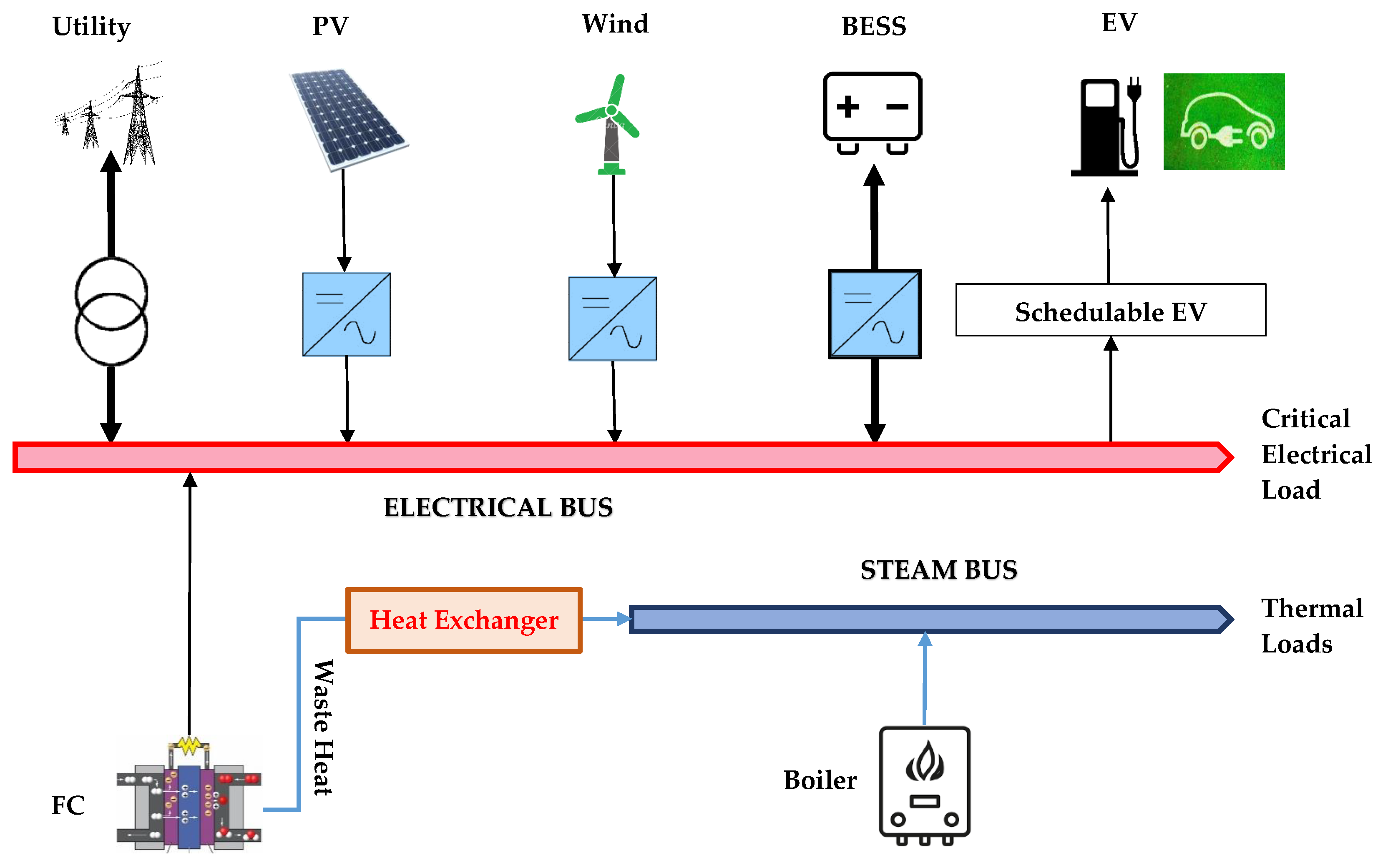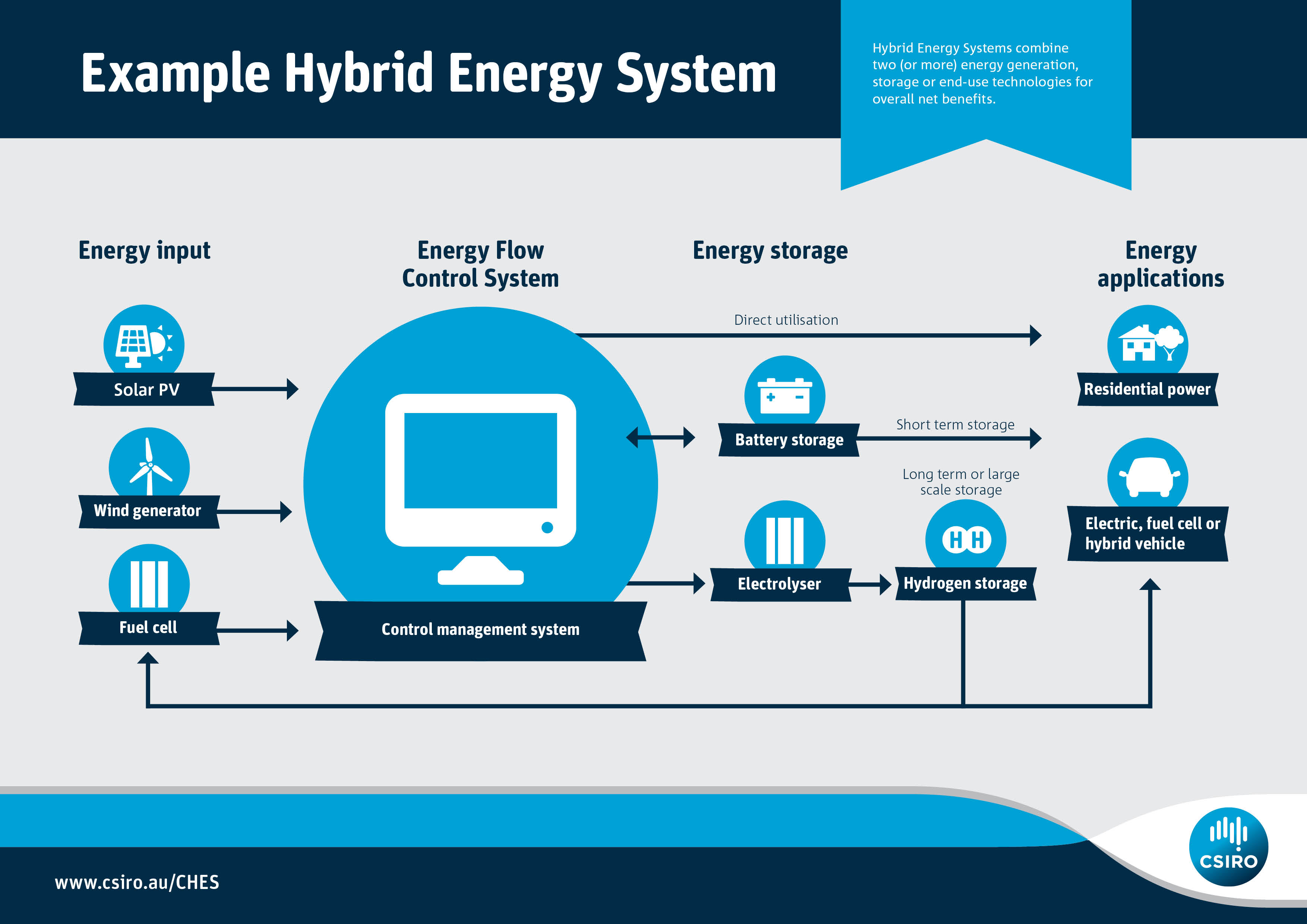
For example, 60 per cent from a biomass system, 20 per cent from a wind energy system and the remainder from fuel cells (Figure 2). Figure 4: Laboratory material for Solar-induced hybrid fuel cell from biomassĬonsider a load of 100 per cent power supply and there is no renewable system to fulfil this need, so two or more renewable energy system can be combined. It is beneficial in terms of reduced line and transformer losses, reduced environmental impacts, relived transmission and distribution congestion, increased system reliability, improved power quality, and increased overall efficiency. Since, it is categorised as a distributed generation system, there is no unified standard or structure.

In other words, it can be said that hybrid energy system is a combination several (two or more) energy sources with appropriate energy conversion technology connected together to feed power to local load or grid. Hybrid energy system usually comprises of two or more renewable energy sources combined in such a way to provide an efficient system (Figure. Overview of Hybrid Renewable Energy Systems In this challenging atmosphere, hybrid energy system (HES) is one of the feasible solutions to harvest energy from renewable energy resources. But it is costly, unreliable, and requires individual conditioning and controlling units. lighting system, water pumping for irrigation, traffic control etc. They are utilised as a standalone system serves many applications i.e. Since, it is dilute and variable in nature, many complexities exist in conversion, condition, control, coordination etc. Since these are abundant, though dilute and variable, locally available, almost and don’t contaminate the environment, simplicity in onsite generation. Presently, scientists and engineers around the globe have been supporting the utilisation of renewable energy resources. Table 1: Installed capacity of renewable energy sources in India

The present generation capacity and estimated potential has been estimated in the table 1. With cutting edge growth in renewable energy sector, these can be viewed as a potential solution for current situation, infact hybrid systems could be look forth as a prior solution to such kind of issues. Thus, in order to promote the development in remote areas there is a requirement to develop a sustainable and efficient energy system to deal with the persistent electricity problems in these areas. Figure 2: Hybrid system of biomass gasifi cation and array Wind Turbine Though country have got a vast hydro electric potential but due to major river water distribution conflicts these cannot be harnessed. India being rapidly growing economy with an average GDP growth rate projected around six per cent over the past two decades still the development aspect of rural areas is yet alarming. In this scenario, the rural people who have very low load demand with dispersed settlement will not get electricity in the near future. However, still the current electricity access is below 50 per cent and the real connection is less than 14 per cent. The Indian Government tried to connect this rural location by using national grid extension for the last two decades. Figure 1: Recycling Energy from Fuel Cell Today, it is widely accepted that renewable energy system (RES) have a large potential to contribute to the strengthening and development of national sustainable energy infrastructure in many countries in the world by securing better energy independence through the mobilisation of domestic renewable energy resources especially in rural areas. Better access to sustainable energy service for rural people in India is prerequisite for the sufficient supply of lighting, communication systems, and the development of income generating activities as well as the improvement of the public health situation.

Almost all of these people live in rural areas most have scanted prospects of gaining access to electricity in the near future.Įnergy is a key component of any poverty eradication and sustainable development strategy and is critical to the achievement of the millennium development goals. At present, more than 70 per cent people in India do not have access to electricity in their homes. Reliable access to electricity is a basic precondition for improving people’s lives in rural areas, for enhanced healthcare, education, and for growth within local economies as well as to meet millennium development goal in 2018. Hybrid Renewable Energy Technologies for Rural India


 0 kommentar(er)
0 kommentar(er)
